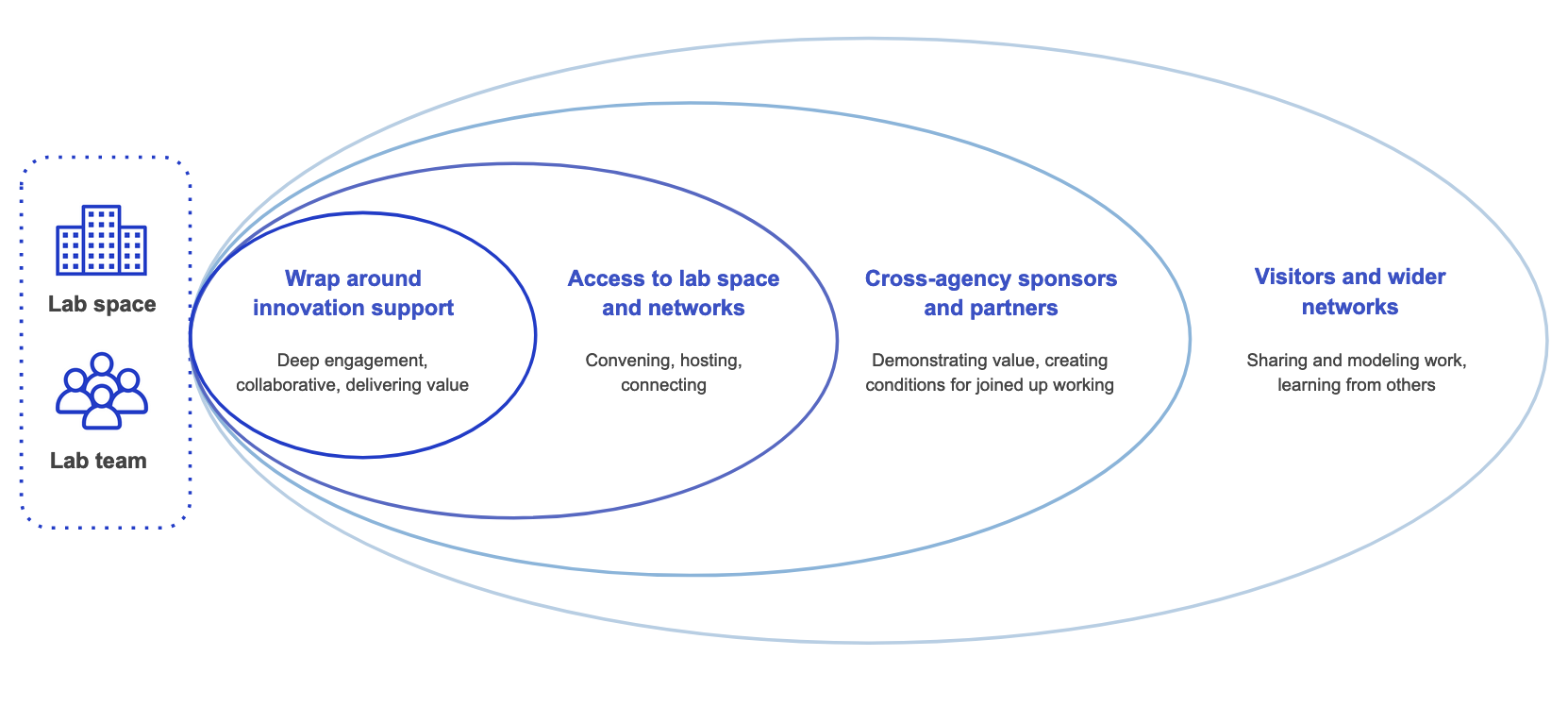Providing advice, hosting and wrap-around support to teams was a key feature of the Lab’s operating model. It enabled the team to provide a flexible and tailored service.
How the Lab team worked
The lab was an interdisciplinary team with backgrounds in agile, design, policy and technology. It used evidence-based decision making and design thinking to transform government service experiences.
We worked in the open to prevent problem shifting and duplication and increase the sharing, reuse and adaptation of tools and approaches. Our approach aimed to reduce risk and increase the impact of innovation across government.
By partnering with other agencies, not for profits, private organisations and other governments we sought to understand, identify and test the best ways to create lasting change. While we had a digital focus we ensured people’s needs are considered first by collaboratively working on creating customer-centric services.
There were two ways teams worked with the Lab:
- Wrap-around support - partnering with the Lab team to help deliver live projects
- Accessing the Lab space - Using the workshop spaces and access to a collaborative environment and the Lab’s networks
In addition people and teams connected with the Lab through its governance structures and wider national and international networks.
Wrap around support
This would primarily happen for activity or projects aligned to the Lab’s work programme. It would involve teams embedding/seconding staff to the Lab. The lab team would provide dedicated innovation support and access to a cross-government pool of knowledge and expertise including development, design, engagement and facilitation support.
Project examples
Access to Lab space
Another way the Lab supported agencies was sharing their space and letting teams host workshop, meetings and even project teams. The Lab team hosted rather than offering wrap-around support and it support shared learning, brought new expertise into the Lab space and enabled guest teams to tap into wider networks across government.
It was a popular option reflected in the demand for access for the space but highlighted the absence of similar spaces across government agencies.
Project examples
Sponsors and governance
The Lab had both a cross-agency governance and reference group.
- The cross-agency governance group consisted of senior decision-makers from a range of agencies. The Lab was part of a wider remit focused on service innovation and the group made decisions about resource allocation and work programming.
- A cross-agency reference group enabled the Lab team to access a cross-section of managers and advisors to help oversee and facilitate the delivery of the work programme.
For both these groups the Lab team, its space and work programme offered a live experiment that was generating learning about working in different ways and across agencies even if their agencies wasn’t directly involved.
Visitors and wider networks
As a cross-agency innovation lab, there was significant interest in the Lab’s purpose, model and work. The team hosted numerous visitors and delegations from across New Zealand. Working with NZTE the team regularly hosts overseas delegations. As part of a wider New Zealand and international network of innovation teams and the Lab was a case study work for led by the OECD on public sector innovation.


